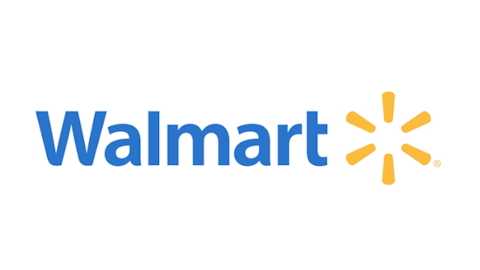
The nationwide banking holiday declared by incoming President Franklin D. Roosevelt could have ended in disaster. The Dow Jones Industrial Average (Dow Jones Indices:.DJI), already dawdling near its post-crash lows, might have fallen further once banks and exchanges reopened if the American public did not buy into FDR’s optimistic proclamations of revival. Early results, however, were encouraging. Americans began to replenish their accounts on March 13, 1933, when the banks reopened. Two days later, on March 15, the investor class sent the clearest possible signal of approval for FDR’s policies: The Dow skyrocketed 15.3% higher, the largest one-day gain in its history.
The New York Times reported an increase in aggregate market value of $3 billion on volume of 3 million shares. “Buying orders poured in from all parts of the country, and on several occasions the stock ticker fell two or three minutes behind.” There were so few sales orders that most stocks did not even receive any, except at a level up to 40% higher than their price just before Roosevelt declared the bank holiday. It was, in every sense, a buyer’s market — to such a degree that disbelieving exchange officials held back on completing some transactions until it became apparent that no sales orders would come.
Though the Dow had risen from a 1932 low, the surge in stock prices on March 15 signaled the beginning of a ferocious bull market, which grew into the third-largest in the Dow’s history before the market suffered another significant decline.
The gusher that couldn’t be stopped
A geyser of oil blasted into the sky in Kern County, Calif., on March 15, 1910. The Lakeview oil well, about 100 miles north of Los Angeles, had finally reached its target following months of unsuccessful drilling. Drilling had continued, even as it nearly bankrupted the company that began it and despite the order from Union Oil (which had purchased a controlling interest in the land) to cease operations. The great gusher destroyed its derrick as it blew up through 2,200 feet of earth. Oil rained down on the land for days, which dragged on into weeks, and then months.
By its first month of eruption, the Lakeview gusher already exceeded the total flow of the legendary Spindletop gusher, which had inaugurated the modern oil era nine years earlier. Months later, an estimated 50,000 barrels continued to pour out the vast oil reservoir beneath with each passing day. The Los Angeles Times cites the drilling foreman’s frantic efforts to control the gusher, and the seemingly interminable length of time it continued to spout afterwards:
“What we feared was an early rain,” recalled Charles “Dry Hole” Woods, confronted with too much of a good thing. “A flash flood could have spread our ocean of oil down over the valley below. So we went up into the hills with an army of 600 men and dammed up the mouths of the canyon with earth walls 20 feet high and 50 feet thick.”
Some folks saw the gusher as a sign of disapproval from the Almighty. Hadn’t one preacher in Pennsylvania warned drillers that the oil was meant to remain in the earth to “kindle the fires of Hell”? Finally on Sept. 9, 1911, thousands of feet below the surface, the well caved in and sealed itself. It “died as suddenly as it was born,” wrote author William Rintoul.
There had been no flood or fire. And no one was killed, though the long-term effects on the health of the workers were never studied (some complained of skin problems). Of the 378 million gallons of oil that gushed out, about 40% was captured. The ensuing surplus dropped the price of oil by about half, to 30 cents a barrel.
The spill, at 378 million gallons (or 9 million barrels), remains the largest accidental oil spill in the history of the world, exceeded only by the Iraqi army’s sabotage of Kuwait’s oil resources as it was forced out of the country during Operation Desert Storm. The invention of the blowout preventer in 1922 largely eliminated the risk of gusher catastrophes, the dangers of which were accurately depicted in the Oscar-winning film There Will Be Blood. Chevron Corporation (NYSE:CVX), which later bought Union Oil, now operates in the Kern County oil fields, which are still productive more than a century later despite the massive spill.
Internet history
The oldest commercial (“.com”) domain name in the world was registered on March 15, 1985 by now-defunct computer company Symbolics. Symbolics had developed the earliest workstations ever produced in the 1970s, before the term “workstation” entered common use. By the mid-1980s, it had transitioned toward software development and decided to acquire a domain name before anyone really used the Internet — the “www” prefix hadn’t even been created yet! By the late 1980s, Symbolics was on its way to bankruptcy, but the domain survived. It’s still in operation under different ownership; a domain-name holding company acquired it in 2009. Today, there are nearly 250 million top-level domains on the Internet, with roughly half of those consisting of .com or .net registrations.
The dawn of the modern pharmaceutical industry
Pfizer Inc. (NYSE:PFE) reached two important concurrent milestones on March 15, 1950. That day, the FDA approved the company’s Terramycin antibiotic, which became the first Pfizer Inc. (NYSE:PFE)-branded pharmaceutical sold in the United States. The approval also inaugurated the modern pharmaceutical sales strategy when a team of eight salesmen sprung into action that day to move the new product to wholesalers and physicians around the country.
That same day, Pfizer Inc. (NYSE:PFE) reported its annual results for 1949: $7.9 million in net income on $47.6 million in sales. The next 50 years were proof positive of Pfizer’s new pharmaceutical strategy: Sales grew at an annualized rate of 12.1%, and net income grew by 12.7% per year. By then, Pfizer Inc. (NYSE:PFE)’s sales force had grown to 16,700 people around the world.
A merger of equals
Lockheed and Martin Marietta joined forces to become Lockheed Martin Corporation (NYSE:LMT) on March 15, 1995. The new company generated a combined $23 billion in revenue the prior year and employed roughly 170,000 people. It was only fitting for the two companies to merge, as their histories had long paralleled each other. Both were founded in 1912, became major military suppliers in World War II, and continued to grow as competitors for the government’s lucrative contracts throughout the Cold War. Despite its greater corporate power as a new megacontractor, Lockheed Martin Corporation (NYSE:LMT) did no better than its two major aerospace competitors. Lockheed Martin Corporation (NYSE:LMT), The Boeing Company (NYSE:BA), and Northrop Grumman Corporation (NYSE:NOC) all finished out the post-merger decade within 2% of each other’s gains, which averaged out to roughly 174%.
The article The Most Incredible Surge in Dow History originally appeared on Fool.com and is written by Alex Planes.
Fool contributor Alex Planes holds no financial position in any company mentioned here. Add him on Google+ or follow him on Twitter @TMFBiggles for more insight into markets, history, and technology.The Motley Fool recommends Chevron. The Motley Fool owns shares of Lockheed Martin and Northrop Grumman.
Copyright © 1995 – 2013 The Motley Fool, LLC. All rights reserved. The Motley Fool has a disclosure policy.



